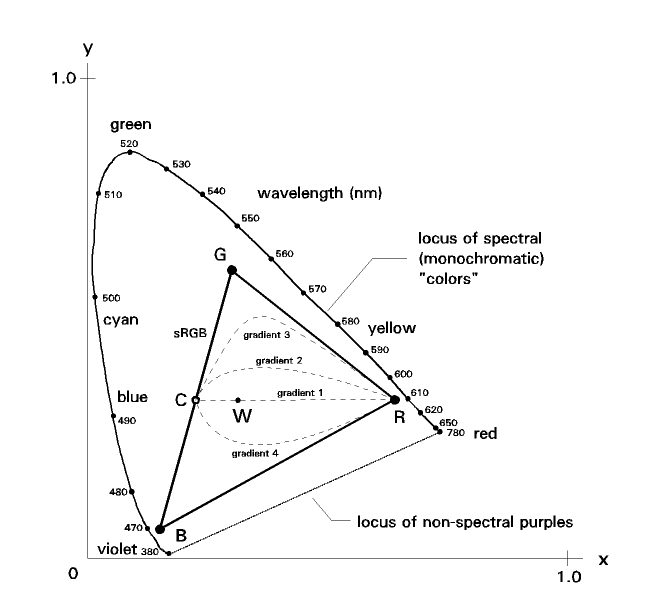That color panel reminds me of the matter of the infamous "bicone" representation of RGB color spaces. The three-dimensional figure essentially comprises two circular cones with their bases stuck together. It is said to help understand some of the properties of RGB color spaces.
The proponents of this rarely tell us what the three cylindrical coordinates represent. If pressed, they generally say that the vertical axis (apex-to-apex) represents "luminance", the radial axis represents "saturation", and the azimuthal coordinate ("longitude") represents hue.
I put "luminance" and "saturation" in quotes to recognize that these are not the normal colorimetric quantities. Rather, they are "cousins" of those quantities that work conveniently in the context of an RGB color space. For example, the colors RGB=255,0,0 and RGB=0,255,0 do not have the same luminance, but it can be handy to think of them as having the same "luminance" in this context. Fair enough.
The story goes: the fact that the figure tapers to a point at the top reflects that, in a RGB color space, as we increase the "luminance", the available range of "saturation" shrinks. When we reach maximum "luminance", there can be only one color (wide-open white), whose saturation is zero.
This part of the story is sensible.
Now, below the equator, the story is that: the fact that the figure tapers to a point at the bottom reflects that, when luminance reaches zero, there is only one color possible, "black", and it has zero saturation.
But that is untrue. The fact is that for zero luminance, saturation is
undefined (not zero). If we go to a very tiny but non-zero luminance, we find that the full range of saturation is available. For example, the color RGB=5,0,0 should be considered to have the same saturation as the color RGB=100,0,0. (If we "amplified" all its RGB coordinates in proportion, which we know would keep the same chromaticity, and thus the same saturation, we could reach 100,0,0.)
Thus, in fact, the three-dimensional figure in this coordinate system is a cone atop a cylinder, not a cone atop an inverted cone.
So the "bicone" outlook is cute, but meaningless.
Now, in the coordinate system I described, any horizontal plane is a plane of
chromaticity (in a special, pragmatic sense).
If instead we define the radial coordinate so that any horizontal plane becomes a plane of
chrominance, then we would have a figure that is essentially a bicone.
Chrominance refers to a property of color that can be thought of as "a dose of not-white light added to a certain quantity of white light to produce the color of interest". For any white, the chrominance is zero. For black, chrominance is undefined, but for a color of very low luminance ("almost black"), chrominance is almost zero.
Best regards,
Doug

